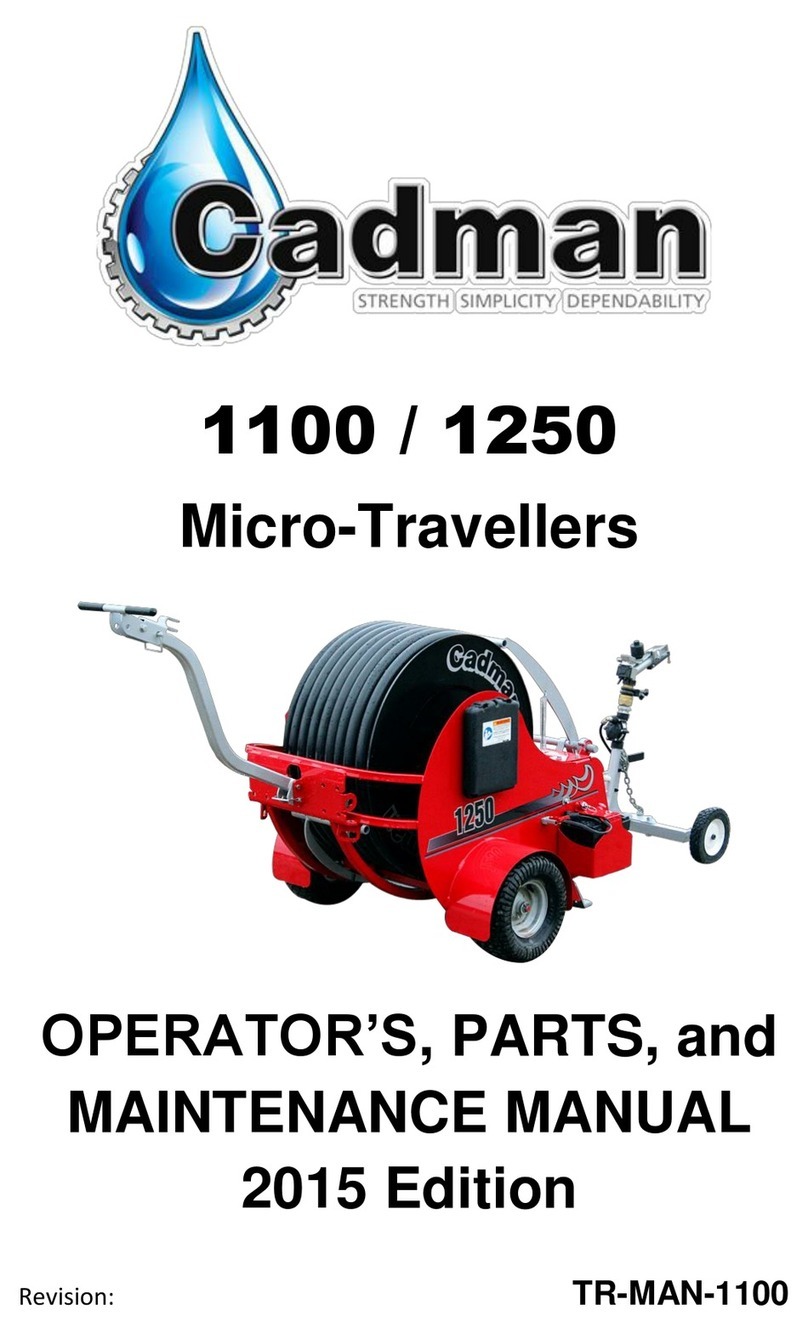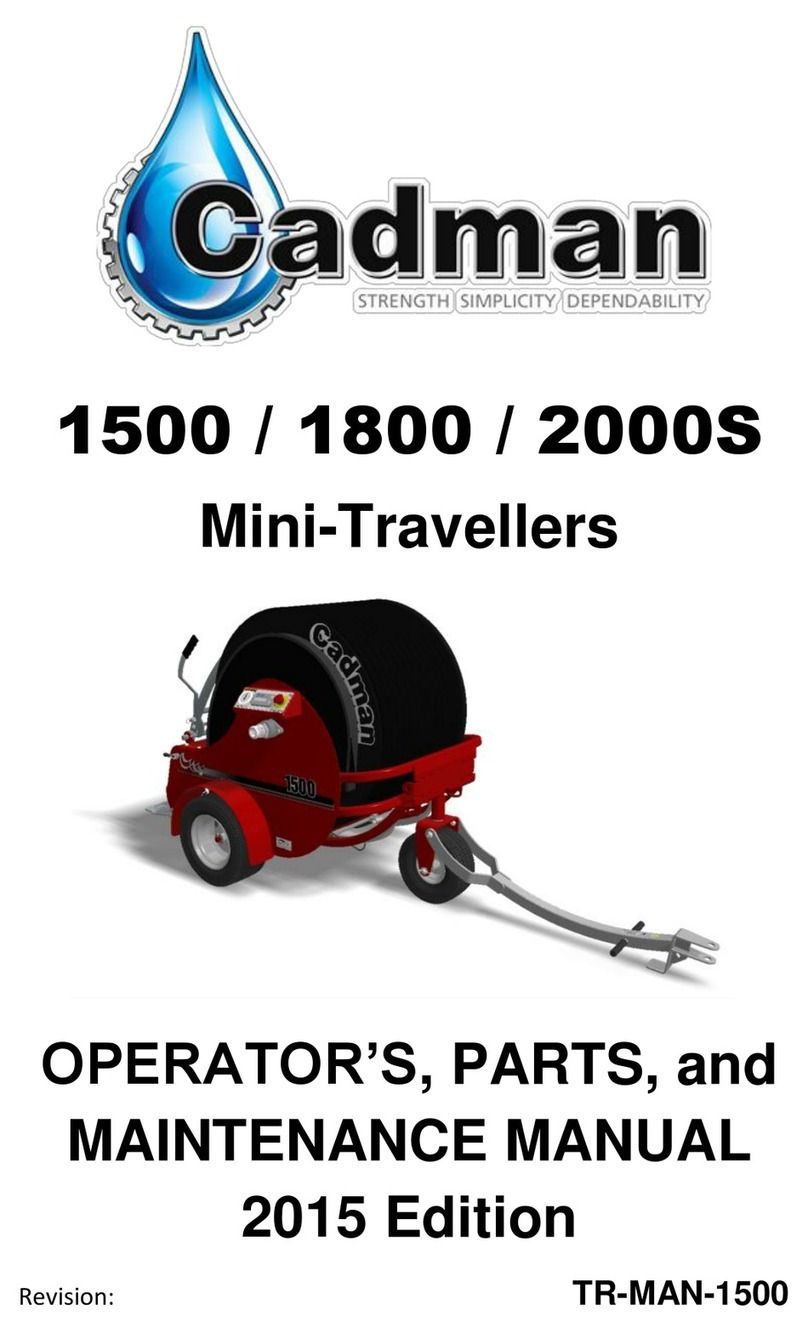
8
WHEN APPLYING LIQUID MANURE . . .
Environmental concerns seem to be driving legislative agendas in many
agricultural areas across the continent. Current and pending laws in many agricultural
regions of North America are changing the ways in which the agricultural community is
expected to manage their liquid animal waste products.
The changes in legislation typically target two main issues; run-off prevention
during and after application and soil nutrient loading.
Run off seems to be the largest concern with nutrient application. Run off may
result from several different factors, most of which are controllable. These factors
include; exceeding the soil intake rate; nutrient application on steep grades; high
application amounts; leaking mainline fittings and seals; sudden rainfall during or
immediately after application; ground frost; etc. Constant watch must be kept and
immediate action taken when necessary to prevent run off from occurring.
Soil nutrient loading depends on many variables. Some of these variables (but
certainly not all) are soil type, type of crop being grown in the irrigated area, application
timing, nutrient value of the material being applied (nutrient value should be assessed at
the time of application as it can change throughout the year), etc.
Soil type will determine the intake rate at which liquid may be applied. Cultivation
of the field just prior to application can improve the intake rate of some soils.
Great potential benefit lies in using the nutritional value of the product being
applied to replace some or all of the traditional chemical fertilizer used. Application
timing and amount are important considerations. Soil analysis taken prior to planting and
during the growth periods of the crop will help determine if there is room for further
application amounts to be added prior to crop maturity. A total management plan should
include provisions to end the crop season without surplus nutrients left as residual.
These excess nutrients typically end up in the ground water supply. Local colleges,
universities and agricultural extension services are usually a good source of information.
They can usually help you determine an application program that prevents soil nutrient
overload due to excess application.
Cadman Power Equipment Limited cannot possibly provide up-to-date
recommendations with regard to the legal obligations you must deal with in your
particular area. However, as a manufacturer of equipment used in nutrient application
(liquid manure, milk house run-off, etc.), we feel it necessary to make you aware that the
municipal, regional and state governing bodies in your area may have recently enacted
new legislation or revised existing legislation with regard to nutrient handling practices
and procedures.
It is your responsibility to make yourself aware of and abide by the current
legislation in your area. Please take the time to contact your local agricultural
representative to obtain the latest information regarding legal nutrient application and
handling.





























